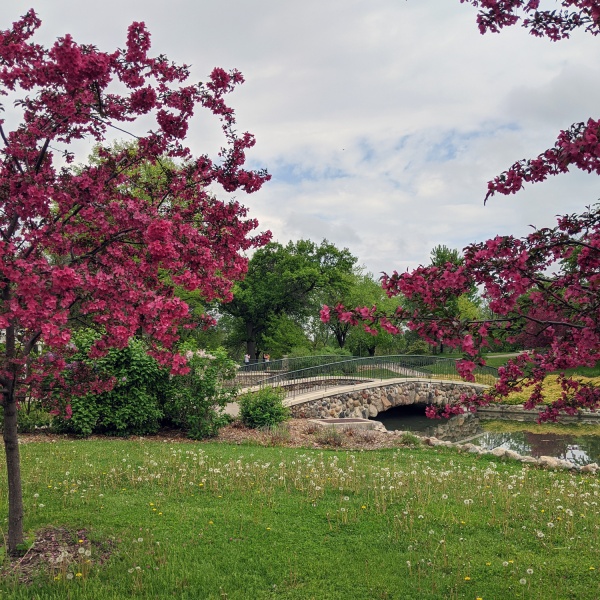A Historic Opportunity to Invest in Minnesota Communities
Our planet’s climate is changing, and we’re feeling the effects right here in Minnesota. While climate change impacts our state’s ecosystems, economy, infrastructure, and public health, other dangers such as lead drinking water lines continue to threaten our well-being. By making significant investments in communities across Minnesota, we can mitigate these challenges to ensure the whole state thrives.
Decades of inaction have left Minnesota communities at risk for these environmental crises without sufficient resources to protect their residents. But we now have a unique opportunity for change.
In November 2021, Congress passed the $1.2 Trillion Infrastructure Investment & Jobs Act—commonly referred to as the Bipartisan Infrastructure Deal—dedicating $550 billion in funding to be allocated to states. Minnesota is expected to receive at least $6.6 billion in federal funding for transportation, water infrastructure, energy, cybersecurity, and broadband, but many federal grants must have state matching funds. As of December 2022, the state had a record $17.6 billion budget surplus. Putting a small portion of this surplus toward matching would ensure Minnesota doesn’t lose out to other states during competitive bidding processes.
Federal investments for our communities are also coming from the Inflation Reduction Act (IRA). On August 16th, President Biden signed this historic legislation into law, the largest investment in climate action in US history. In 2021, there were already 57,931 Minnesota workers employed in clean energy jobs. The Inflation Reduction Act will expand these opportunities, bringing an estimated $8.5 billion of investment in large-scale clean power generation and storage to Minnesota between now and 2030.
With long-term funding opportunities on the table, it’s crucial that Minnesota take advantage of the federal funding in the Inflation Reduction Act (IRA) and the Infrastructure Investment & Jobs Act (IIJA) to mitigate the effects of climate change and invest in our community’s infrastructure. We need legislators to allocate funds to guarantee Minnesota gets its fair share of federal matching grants.
How We Invest In Communities
The state has two primary tools in the 2023 legislative session: regular biennial budgeting and capital investment.
- Capital investment refers to Minnesota’s “bonding bill,” which means using general obligation bonds—in combination with general fund spending and appropriation bonds—to fund public projects requested by state agencies and local governments. While Minnesota generally passes bonding bills in even years, the lack of a bonding bill in 2022 and the significant capital needs across the state necessitate such a bill in 2023.
- Biennial budgeting refers to the regular two-year budget that funds our state government. In odd years, such as 2023, the Legislature must pass a biennial budget. Using this process, the Legislature can provide both one-time and ongoing “base” appropriations for necessary projects.
This year, with a historic state surplus, Minnesota has the chance to create significant community investment in climate and water solutions.
What Community Investment Looks Like
With federal funding and state climate proposals, many projects may be funded, including:
- State competitiveness funding for federal energy grid infrastructure and energy grants
- Clean energy innovation and solar on public facilities
- Transit, public transportation, and active transportation infrastructure
- Electric vehicle investment and infrastructure
- Weatherization and building efficiency
- Recycling and waste reduction
- Tree planting, soil health, and land conservation for carbon sequestration
- Wetland restoration
- Infrastructure resiliency
- Wastewater treatment
- Lead service line inventorying and replacement
Digging In: Lead Service Line Replacement
Our state currently has an estimated 260,000 or more lead service lines, exposing thousands of residents to dangerous lead contamination in drinking water at a rate much higher than the national average—in fact, Minnesota has the tenth-highest number of lead pipes per capita in the US.
Lead exposure can damage the brain, kidneys, and nervous system, and, among children, it can contribute to slowed development and problems with learning, behavior, and hearing. There is no safe level of lead consumption, and lead service lines remain a persistent threat to local communities.
Although the Infrastructure Investment & Jobs Act has provided $217 million in grants and loans to assist with lead service line removal, the outstanding need in Minnesota still sits at about $800 million. Using a combination of state and federal dollars, we could end the use of lead service lines in Minnesota. Multiple states have set goals to inventory and remove all lead service lines. The Minnesota Legislature could set a similar goal and to provide the resources necessary to meet it.
Representative Sydney Jordan’s bill, HF 24, presents a rare opportunity to permanently eliminate the risk posed by lead service lines, at no additional cost to residents. With an $810 million appropriation, this bill takes bold action to identify and remove every lead service line in Minnesota by 2033. The bill has currently passed the Economic Development Finance and Policy Committee.
A bill has been introduced in the Legislature to provide enough funding to help cities find and replace all old lead pipes by 2033. Take one minute to urge your elected officials to make protecting our water a top priority this session.
Restoring State Parks & Public Lands Funding
The Department of Natural Resources (DNR) witnessed enormous pressure on our parks, trails, and other outdoor recreation areas as Minnesotans got outside in record numbers during the pandemic. With billions in state surplus dollars, the Minnesota Legislature can invest in repairs to state parks, trails, and outdoor recreation spaces so we can continue to enjoy our beautiful forests, prairies, shorelines, and open spaces. The Capital Investment Bill should provide adequate funding for the DNR to ensure the long-term survival of outdoor infrastructure.
Let’s Not Miss Out
Wide-ranging community investments in climate and water could make real change. And if matching funds aren’t secured, Minnesota will miss out on our fair share of funding. Conservation Minnesota is dedicated to working with legislators and stakeholders to pass equitable and transformative funding across these issue areas and create lasting benefits for our state.

